- 홈
- 스터디K
- 유학생활
- 생활정보
Traffic
Korea has a variety of transportation options, and for a comfortable and convenient study abroad experience, it's advisable to check the transportation methods available in the chosen study area or for visiting various local attractions during your time as an international student.
-
Intercity Bus >
Almost all areas in Korea can be reached within 10 hours.
If you know how to get to the destination, almost all regions in Korea can be reached very easily.Intercity Bus >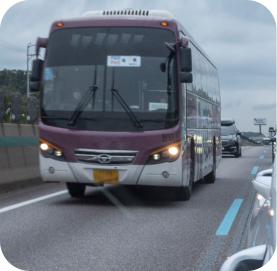
-
Train >
Korean trains come in 6 types with different travel speeds: KTX, Saemaeul, Mugunghwa, Nuriro, ITX, SRT.
Train >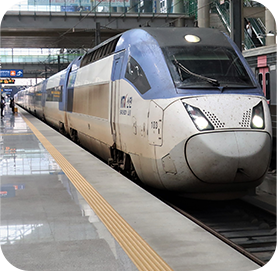
-
Public transportation >
There are city buses and subways in almost all cities in Korea.
They are cheap to use, and many people use them.Public transportation >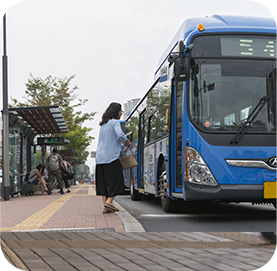
-
Taxi >
Taxis are easy to use because taxi fares are not expensive.
There are many types of taxis, and they quickly take passengers to wherever they want to go.Taxi >
-
Air travel >
There are 8 international airports and 7 domestic airports in Korea.
You can quickly get to any destination in the country through an airport near your region.Air travel >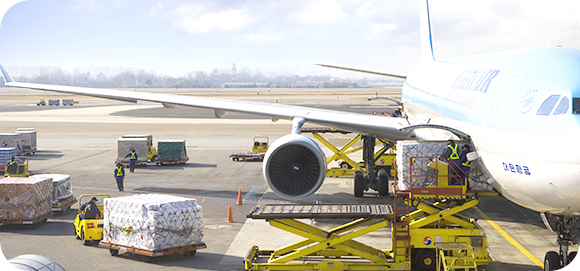
-
Obtaining a driver's license >
Foreigners who are legal residents of Korea can obtain a driver's license by going through the appropriate process.
Korea's transportation networks are intricately configured; if you comply with road traffic laws, you will be able to travel to most destinations in the country.Obtaining a driver's license >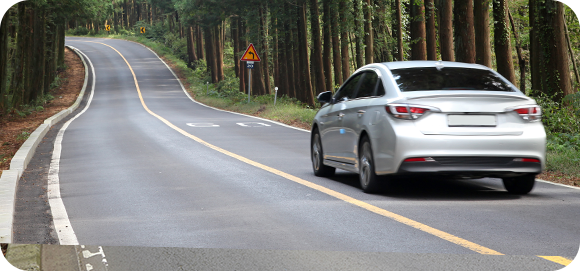
Intercity Bus

There are 2 types of intercity buses in Korea.
- 1) Express bus
- Goes direct to your destination via the highways.
- 2) Regular intercity bus
- Regular intercity buses use all highways, national roads, and local roads and pass through several regions.
Intercity buses tend to stop less frequently in smaller cities, so you should check the bus schedule beforehand when wishing to travel to provincial areas.
* Since reservation methods may vary by region and bus company, it is best to obtain information on the region through the Internet or by phone.
- Regular intercity buses use all highways, national roads, and local roads and pass through several regions.
-
Check information on the region you wish to travel to
-
Intercity bus integrated reservation
-
Bustago (reservation site)
Train

Korean trains come in 6 types with different travel speeds: KTX, Saemaeul, Mugunghwa, Nuriro, ITX, SRT.
- KTX: KTX is used by passengers who want to travel quickly between most major cities in Korea. KTX, which can run at a speed of 305 km with a total of 20 cars and 935 seats, is the fastest train in Korea.
- Saemaeul: Saemaeul is KORAIL's medium- to long-distance railway line operating only on the Janghang Line, which is a non-electrified section.
- Mugunghwa: The Mugunghwa railway line is named after the Rose of Sharon, Korea's national flower. It is the slowest among trains, operating mainly at stations where KTX and Saemaeul trains do not stop.
- Nuriro: Nuriro is in the same class as the Mugunghwa. It started to be operated in 2009, currently carrying passengers between the Janghang Line and the Chungbuk Line.
- SRT: SRT started operation in 2016, operating the Gyeongbu High-Speed Line and Honam High-Speed Line. It is operated by SR.
- ITX Youth Train: This train began operation in 2012, running only from Yongsan, Seoul to Chuncheon, Gangwon-do and sharing many stations with the Seoul subway.
-
Ticket reservation
-
Korea Railroad Corporation
-
SR-SupremeRailways
Public transportation
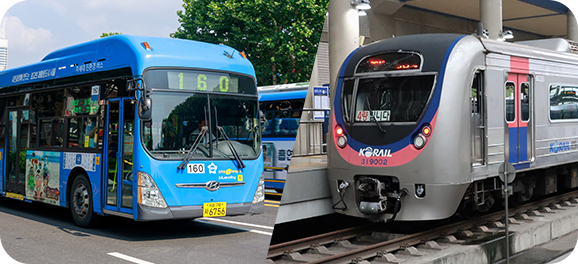
Public transportation can be conveniently accessed in all regions in Korea.
- City bus: Regardless of the city size, city buses can be used in almost all regions in Korea. However, the operating system varies by region, so there are differences in the number of stops and fares.
- Subway: Subway lines are operated by Seoul, Busan, Daegu, Incheon, Daejeon, and Gwangju. The routes are so diverse that a person can go practically anywhere in the Seoul metropolitan area by just using subways.
* However, additional costs apply depending on the travel distance.
In order to use this transfer system, passengers must carry a card. Almost all Koreans use personal transportation cards or T-money cards and receive discounts on fares. Because one has to have a transportation card or a T-money card in order to use the transfer system, the card can be viewed as an essential element of using Korea's public transportation.
* To use the transfer, you must swipe your card on the terminal when getting off the bus.
Cash may be used to pay for public transportation fare, but very few people use it; and since one cannot use the transfer system with cash, a transportation card or a T-money card is highly recommended for people living in Korea.
-
Check the bus routes
-
Check the subway route map
-
Get a T-money transportation card
Taxi
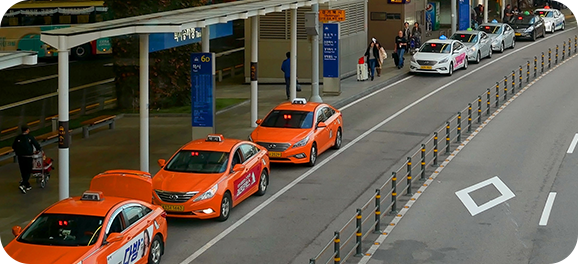
There are trains in Korea that pass through various travel destinations.
- 1. Regular taxis
Regular taxis and deluxe taxis are the 2 types of taxis that carry passengers in Korea. They are distinguishable by the color of the vehicle or the text written on top of the vehicle.
Taxis are painted in light yellow, white, silver, or black. Black taxis are deluxe taxis, and the other colors are regular taxis. Taxis can also have white or blue decoration on top of the car.
A taxi with white decoration is a private taxi, and the one with blue decoration is a taxi operated by a taxi fleet company.
Regular taxi: Basic fare (2km): 3,800 won | Additional charge (per 132m): 100 won | Late-night surcharge (24:00~04:00): 20%
Deluxe taxi & large taxi: Basic fare (3km): KRW 6,500 | Additional charge (per 151m): 200 won | Late-night surcharge (24:00~04:00): None
You can catch a taxi by simply waving your hand when a taxi approaches you and you see that it has an “Empty Car” sign on the box at the top of the taxi. - 2. International taxis
As a foreign-language taxi service officially designated by Seoul City, the international taxi can be easily and conveniently used by foreigners visiting Seoul as well as foreigners residing in Seoul.
If you are using the international taxi to go from Incheon Airport to downtown Seoul, there are designated areas in downtown Seoul where a flat taxi rate applies. Therefore, international taxis provide economic service for travelers to Seoul. - 3. Call taxis
There is a wide range of mobile apps that could be downloaded and used for calling call taxis, with Kakao Taxi as the most popular call taxi app.
-
International taxi
Air travel
- Gimpo International Airport
- Incheon International Airport
- Yangyang Airport
- Wonju Airport
- Cheongju Airport
- Gunsan Airport
- Daegu Airport
- Pohang Airport
- Ulsan Airport
- Gwangju Airport
- Yeosu Airport
- Sacheon Airport
- Gimhae Airport
- Muan Airport
- Jeju Airport
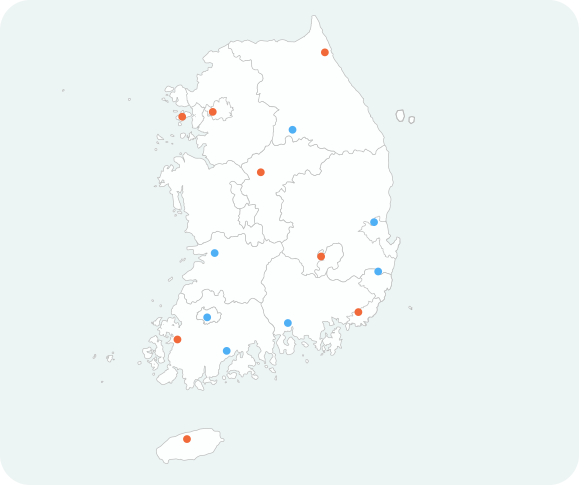
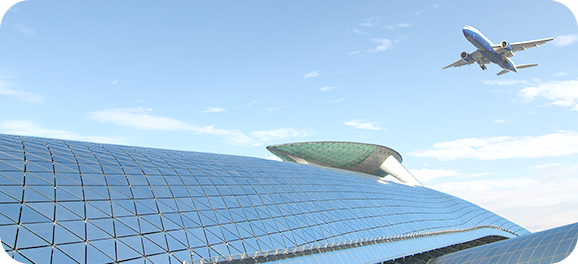
(Incheon, Gimpo, Gimhae, Jeju, Daegu, Cheongju, Yangyang, and Muan) and 7 domestic airports (Gwangju, Ulsan, Yeosu, Sacheon, Pohang, Gunsan, and Wonju) in Korea.
Most international flights arrive through Incheon Airport and Gimpo Airport.
If you are planning to travel domestically, you can check your travel destination and use the local airport.
-
Korea Airports Corporation
Obtaining a driver's license
- Traffic safety education before taking the exam
- Physical examination
- Department exam
- Function test
- Issuance of practice license
- Road test
- Driver's license issuance

By going through the process above, a foreigner who is a legal resident of Korea can obtain a driver's license; before taking the department exam, the applicant can choose from Korean, English, Chinese, or Vietnamese.
Converting a foreign driver's license into a domestic license
Driving in Korea with a driver's license issued by a foreign country is prohibited by law. However, individuals holding a driver's license issued by an authorized foreign agency can apply for conversion of their foreign license into a domestic license by following the appropriate process.
※ Source: Safe Driving Integrated Civil Service (https://www.safedriving.or.kr, Tel. 1577-1120)
-
Resident services for safe driving

